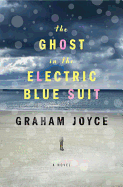
| Publisher: | Doubleday | |
| Genre: | Suspense, Fiction, Coming of Age, Thrillers, Literary, Visionary & Metaphysical | |
| ISBN: | 9780385538633 | |
| Pub Date: | August 2014 | |
| Price: | $24.95 |
| Starred | Fiction |
by Graham Joyce
Graham Joyce (Some Kind of Fairy Tale) explores family legacies and the struggle for new beginnings in The Ghost in the Electric Blue Suit.
In the sultry English summer of 1976, David Barwise does not return home from college to work for his stepfather as the family expects, but instead takes a job at a run-down holiday resort. The economy is headed downhill, and the resort industry is especially depressed, but David is attracted to the seaside town where his biological father disappeared mysteriously when his boy was a toddler.
His coworkers are a rowdy bunch in which "everyone has an angle." Among them, David is particularly drawn to Colin, a dangerously angry brooder, and his wife, Terri, beautiful and silent. Over the course of the summer he will find himself pulled against his will into a political association he finds hard to break. He'll find lust and, later, love. And eventually he'll solve the mystery of his father's fate and build a new relationship with his mother and stepfather.
The cast of colorful characters includes some neo-Nazis, a woman with a mysterious past, a solitary Italian tenor, an unlikely pair of fortune-telling sisters and a friendly young dancer. But Joyce's most remarkable achievement is the tense atmosphere of this slim and haunting novel, simultaneously dreamy and chilling, setting David's preference for Velvet Underground and Jimi Hendrix against the backdrop of Sinatra, Como and Nat King Cole performed in a dying theater. --Julia Jenkins, librarian and blogger at pagesofjulia
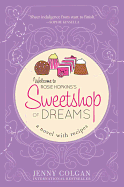
| Publisher: | Sourcebooks Landmark | |
| Genre: | Fiction, Romance, Contemporary Women, Contemporary | |
| ISBN: | 9781402281839 | |
| Pub Date: | August 2014 | |
| Price: | $14.99 |
| Fiction |
by Jenny Colgan
Jenny Colgan (Meet Me at the Cupcake Café, The Loveliest Chocolate Shop in Paris) has a knack for creating likable, ordinary heroines. Rosie Hopkins, a nursing assistant in London, has a nice--albeit tiny--flat with Gerard, her slightly boring boyfriend of seven years. Mostly content with her lot, Rosie is caught off guard by a phone call from her mother advising a change of pace. Her mum has the perfect opportunity in mind: her great-aunt Lillian needs help recovering from surgery.
Reluctantly, Rosie sets out for tiny Lipton, hoping to be gone from Gerard and her job for only a few weeks. But to her surprise, Rosie is enchanted: by her aunt, by the little village and by the irresistible sweetshop that Lillian has run for decades. And soon, several very different men are vying for Rosie's attention, forcing her to rethink her uneventful relationship with Gerard. Meanwhile, Rosie's presence causes Lillian to reminisce about her own star-crossed love story.
The chapters of Sweetshop of Dreams alternate between Rosie's present and Lillian's past, some 60 years ago. Each one starts with a paragraph or two from a candy cookbook Lillian once wrote. In these excerpts, Lillian shares recipes, reflects fondly on old-fashioned sweets and bemoans the modern prevalence of chewing gum. Thanks to the confectionery theme linking the romances, it is perhaps too cliché to call Sweetshop of Dreams a sweet story, but it is indeed a charming little tale of love and family. --Jessica Howard, blogger at Quirky Bookworm
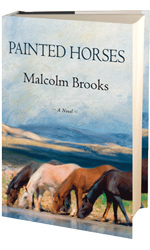
| Publisher: | Grove Press | |
| Genre: | Fiction, Literary | |
| ISBN: | 9780802121646 | |
| Pub Date: | August 2014 | |
| Price: | $26 |
| Fiction |
by Malcolm Brooks
This debut novel by Malcolm Brooks is a paean to the untamed majesty of his home state, Montana, that rings like the neigh of a horse running free in a canyon. With a startlingly clear view into a past when the American West was still wild, Brooks transports readers into a breathtaking, ruthless landscape. In the sagebrush and dust, an aristocratic young woman and an unrefined loner surrender not only to their passion for each other, but for the lost secrets of a wilderness under siege.
Aspiring archeologist Catherine Lemay faces the same challenges as any 1950s American woman with serious career goals. Her parents and fiancé don't understand why she would rather dig in the dirt than choose china patterns. Finding an employer who will even consider hiring a woman, let alone take one seriously, is next to impossible. When the Smithsonian Institution's River Basin Surveys department offers Catherine a position surveying a Montana canyon prior to the building of a hydroelectric dam, she takes her chances on the project, even though the dam contractor can't be bothered to remember her name. Allegedly hired because of her previous experience working on a dig in advance of construction, Catherine quickly realizes no one expects her to find anything in the presumably barren expanses of Montana, and no one wants her to. Her survey is a mere formality to placate the Crow Nation, who call the canyon sacred ground. Determined, stubborn Catherine takes the foregone conclusion of her failure as motivation to look harder. To help in her quest, she hires a headstrong young Crow woman named Miriam, as clever as Catherine but raised far from Catherine's privileged New England world in a place where "Farmers are their own carpenters. Their own mechanics, too." Through Miriam, whose eldest relative remembers the time of Custer, Catherine learns stories of the Crow and brushes with their culture at a celebration where she hears "a song of glory and mourning and revenge, with drums bashing like the blows of a club and voices like women hysterical with loss, other voices like souls wailing back, across a chasm that couldn't be crossed. She thought if hell were real and Custer had gone there, he doubtless heard something like this now, and always, and forever." However, her greatest revelation comes from the mysterious drifter John H, a horseman as comfortable in the Montana wilderness as the herds he tracks.
John H has his own reason for taking an interest in the canyon: a herd of wild horses, not mixed-blood mustangs, but pure-blooded Barbs whose lineage has remained unspoiled through the centuries. "These horses had crossed northern Africa with the Berbers, carried warring Moors into Spain. Into the New World with Cortez, to put the fear of pale gods into the Aztec. Eaten by the Apache. Adopted by the Comanche. John H had heard the stories. He had not seen their kind in all his years on the sage." From his youngest days, John has demonstrated an innate understanding of equine behavior and the ability to quickly earn an untamed horse's trust. A loner since his teen years, he rode the rails into Montana, where he trailed sheep with his Basque mentor, became a mustang hunter, and eventually found himself drafted into World War II. On foreign soil, John comes to truly understand the ancient history of man and horse, that "The grace of the horse caught the eye of the hunter, and the eye of the hunter saw its destiny.... To conquer the world with art." Now he lives in solitude, painting and dreaming horses, trying to wall out the world. His growing connection with Catherine gives him the rare chance to share his vision of the landscape he calls home, to describe the Montana autumn when "The smallest wind and the entire mountain lights up. The flicker of all of those leaves, shimmering at once. Thousands of leaves, all one color. Hundreds of different trees. All one tree."
Brooks's narrative sprawls across the New World and the Old, from the open frontier to a rarely seen sliver of World War II and to a lost Roman temple. History and progress jostle against one another in a constant battle for the future. Catherine began her tutelage in the struggle between preservation and progress while studying piano in London. Instead of attending music classes, she found herself drawn to an archeological dig uncovering the remains of the Roman city of Londinium, buried 20 feet below the modern city. The crew had to work quickly to excavate and document their findings before construction destroyed the site. In Montana, she finds that the Crow people have fought for years to stop their culture from becoming an artifact in the march toward modern convenience. John H already watched a way of life die when fences ended the open range, and his insight into the inner lives of horses speaks to a connection between nature and humanity that had already begun to vanish by the mid-20th century. Brooks offers contrasts between past and future, morals and convention, intermingled with a breathless love for one of America's last great wildernesses. All of the adventure and romance of the classic western novel awaits readers here, made even more vibrant by a tinge of bittersweet nostalgia. Glowing with spirit, Brooks's debut will entrance anyone who has ever felt the call of the West. --Jaclyn Fulwood
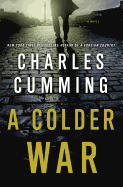
| Publisher: | St. Martin's Press | |
| Genre: | Espionage, Fiction, Thrillers | |
| ISBN: | 9781250020611 | |
| Pub Date: | August 2014 | |
| Price: | $26.99 |
| Starred | Mystery & Thriller |
by Charles Cumming
A sequel to his A Foreign Country, Charles Cumming's A Colder War digs deeper into the lives of Britain's disgraced Secret Intelligence Service agent Thomas Kell and his boss Amelia Levene, the first female chief of MI6. When Paul Wallinger, SIS Head of Station in Turkey and Levene's occasional lover, crashes his plane and dies off the coast of Greece, she brings in her trusted friend Kell for an off-the-books investigation. Was womanizer Wallinger with another woman, working one of his assets or leaking secrets to the Soviets? Or was the crash just bad luck?
Kell is in professional no-man's-land while being investigated for an overzealous interrogation. His long, rocky marriage is over. He's desperate to get back in the game. Levene's assignment is his life preserver, "a sign from the God in whom Kell still occasionally believed." A visit to Greece quickly convinces him that Wallinger's death is just one knot in a more elaborate tangle of duplicity among the Soviets and both the SIS and its "cousin," the CIA.
A former MI6 recruit before he began writing fiction, Cumming knows the language and bureaucracy of today's world of digital espionage. Like all good spook noir, A Colder War has plenty of spy slang, with cut-outs, moles, drops, honey traps, one-on-ones and other terms of the tradecraft permeating the narrative. This masterful, globetrotting novel is a smart representation of an underground world we might have thought disappeared with the Cold War--until Edward Snowden, Julian Assange and deadly drones came along. --Bruce Jacobs, founding partner, Watermark Books & Cafe, Wichita, Kan.
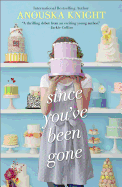
| Publisher: | Harlequin | |
| Genre: | Fiction, Romance, Contemporary Women, Contemporary | |
| ISBN: | 9780373779284 | |
| Pub Date: | July 2014 | |
| Price: | $14.95 |
| Romance |
by Anouska Knight
For British baker Holly Jefferson, there's life after widowhood--even at the ripe old age of 27. Not that she knows it at first, hiding from the world whenever she's not managing a thriving bakery. But she rejoins the land of the living when a certain client wants more than one of her renowned multilayer cakes.
In a frothy romance that manages a somber moment or two, debut novelist Anouska Knight delivers a romantic hero straight from a catalogue. Dashing, rich and disagreeable, Ciaran Argyll swoops into Holly's life to meddle in her business and her bereavement, a move that detracts from his supposed irresistibility. Some readers may find it hard to forgive his upper-crust arrogance, but Knight gives ample distraction with steamy descriptions of Ciaran's hipbones in low-riding sweatpants. Holly's self-assurance anchors her story even as her suitor tries to run the show, and supportive relationships with her sister and employee build a sweet, strong character.
It can be difficult to work death into a love story without undermining the meant-for-each-other theme of the central romance. Knight manages to make Holly's lost husband more than a plot point on her way to new bliss, offering flashbacks to a relationship with its own flaws, humor and quirks. Though the persistent Ciaran would disagree, Holly's period of mourning is not presented as time wasted or even unhealthy. In a quaint setting of old farmhouses and British manors, the most genuine article of Since You've Been Gone is the romantic act of grief. --Allison Williams, senior editor, Seattle Met
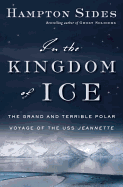
| Publisher: | Doubleday | |
| Genre: | United States, Expeditions & Discoveries, North American, 19th Century, History | |
| ISBN: | 9780385535373 | |
| Pub Date: | August 2014 | |
| Price: | $28.95 |
| History |
by Hampton Sides
Hampton Sides (Ghost Soldiers) bolsters our ongoing fascination with heroic tales of voyages to the polar caps. To the list that includes Peary and Shackleton, we can now add U.S. Navy Commander George W. DeLong, of the USS Jeannette. The "Polar Problem," as it was called then, loomed large and mysterious. Scientists conjectured that the Arctic Ocean was warm, the open water tepid and easy to sail. Arctic expert August Petermann believed the best route to the Arctic was the Bering Sea; DeLong, bankrolled by newspaper tycoon James Gordon Bennett Jr., agreed. On July 8, 1879, the USS Jeannette--outfitted with a steam engine, desalination apparatus, three years of provisions and cases of Budweiser--set sail from San Francisco with a crew of 30. An 11-gun salute roared from the ramparts of the Presidio; DeLong's journal, later recovered, provided Sides with many of the details that give his book depth and credibility.
In August, the ship stopped in Alaska to take on more coal, then sailed on. In early September, an American whaling fleet spotted the Jeannette near Herald Island, trailing a plume of black smoke. It was the last sighting of the ship. That month, ice 15 feet thick and massive floes battered the Jeannette, eventually trapping it. On November 13, the sun set and the crew was "plunged in nearly complete darkness." The year turned. In January 1881, the ship began to leak. The grand part was over; the terrible part had begun.
Though the outcome is known, adventure-loving readers will find much to enjoy in Sides's suspenseful telling of this tragic, heroic tale. --Tom Lavoie, former publisher
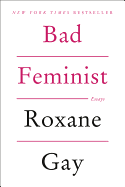
| Publisher: | Harper Perennial | |
| Genre: | Literary Criticism, Humor, Form, Biography & Autobiography, Social Science, Essays, Feminist, Personal Memoirs | |
| ISBN: | 9780062282712 | |
| Pub Date: | August 2014 | |
| Price: | $15.99 |
| Essays & Criticism |
by Roxane Gay
Don't let the title fool you. Roxane Gay--cultural critic, blogger, and author of Ayiti and An Untamed State--isn't a bad feminist. She's outspoken, persuasive and incisive, and in her essay collection Bad Feminist, she proves that feminism can exist among a variety of apparent contradictions, be they loving the color pink or dancing to a filthy rap song.
The collection is a perfect entrée into the world of feminism for those whose politics or predilections might have initially made them wary of the term. Gay writes fearlessly, calling foul on anyone whose superficial concept of a feminist entails an angry wench with hairy armpits. She empowers her readers to be any kind of feminist they choose, even a "bad" one, confessing her own uneasy ardor for the ultra-girly Sweet Valley High books and melodramatic reality TV. Unlike many cultural critics, Gay doesn't pretend to have all the answers; her greatest strength here is her insistence on raising questions, even those she can't resolve in the course of an essay. She tackles disparate, sometimes controversial subjects like Trayvon Martin's killing or the racial implications of the film Django Unchained with empathy and openness, interweaving her own experiences with larger cultural observations.
As a volume, these essays aren't entirely cohesive. Sometimes it's obvious that they were pulled from disparate corners of the Internet, packaged together with the most convenient theme. Still, the book is powerful, and its winsomeness is due entirely to Gay's fearless, inclusive and accessible prose. --Linnie Greene, freelance writer and bookseller at Flyleaf Books
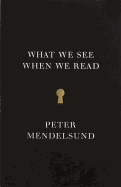
| Publisher: | Vintage | |
| Genre: | Literary Criticism, Art, General, Books & Reading, Philosophy, Aesthetics | |
| ISBN: | 9780804171632 | |
| Pub Date: | August 2014 | |
| Price: | $16.95 |
| Essays & Criticism |
by Peter Mendelsund
Is it uncommon to mistake scenes from a favorite book for true memories of your own life? Why are some reading experiences so realistic and immersive while others feel artificial? Can we accurately picture any of the characters we fall in love with? What exactly happens when we read? Peter Mendelsund, associate art director for book publisher Knopf--notable for his cover designs for The Girl with the Dragon Tattoo and recent books by Ben Marcus, among many others--decided to find out. The result is the topsy-turvily illustrated marvel What We See When We Read.
Reading isn't merely a system for semantic conveyance, as many bookworms well know. The activity instead resembles a kind of transfiguration, in which text fades into oblivion as new worlds flower in our minds. Thank heaven for Mendelsund's artistic knack because, as he notes early into the adventure, "We imagine that the experience of reading is like that of watching a film. But this is not what actually happens--this is neither what reading is, nor what reading is like."
Why reading is unlike a movie playing in the mind can simply be illustrated by how vastly a book can differ when reread years later. But that doesn't bring us any closer to understanding the activity itself. What helps is Mendelsund's measured approach and his playful dismantling of language. He maps the dreamscape of reading to show us how the mirage dissolves under close scrutiny but its memory still burns brilliant. What a tangible magic books are! --Dave Wheeler, publishing assistant, Shelf Awareness
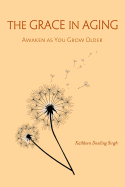
| Publisher: | Wisdom Publications | |
| Genre: | Inspiration & Personal Growth, Buddhism, General, Body, Mind & Spirit, Religion, Self-Help, Aging | |
| ISBN: | 9781614291268 | |
| Pub Date: | August 2014 | |
| Price: | $17.95 |
| Body, Mind & Spirit |
by Kathleen Dowling Singh
As more and more baby boomers reach retirement, many people wonder what their remaining years will hold. From a Buddhist perspective, Kathleen Singh (The Grace in Dying) approaches the question of aging with insight and wisdom, opening the doorway to a relaxed acceptance of the inevitable.
Singh encourages readers to step onto the "noble path," to let go of their egos and to release habits that restrain them and progress from a constricted point of view toward one that embraces love, forgiveness and compassion toward everyone. By being mindful of our actions and words, Singh suggests we can recognize old patterns that hold us captive--that make us fearful, judgmental and ignorant--to find the bigger, brighter picture of the universe that awaits us. Meditation is the first and essential step on this path. Once the beneficial habit of meditation is in place, Singh reminds us that we may encounter silence and solitude, aspects of an aging life that cultivate "holy aloneness" and "allow deeper insight into the true nature of appearances." Excerpts from a variety of poems help emphasize the complexity of Singh's views on the art of aging gracefully.
Using Singh's advice, readers of all ages can gain an awareness of the joy inherent in everyday moments large and small. Her calming and illuminating prose aims to bring a sense of liberation to readers' lives and open their minds to a world full of love, laughter and peace, so they can live with compassion and wisdom, surrounded by truth. --Lee E. Cart, freelance writer and book reviewer
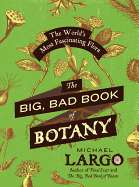
| Publisher: | Morrow | |
| Genre: | General, Plants, Curiosities & Wonders, Reference, Nature | |
| ISBN: | 9780062282750 | |
| Pub Date: | August 2014 | |
| Price: | $18.99 |
| Nature & Environment |
by Michael Largo
Broccoli as we know it today comes to us as a product of early bioengineering (by the Etruscans around 800 B.C.). Eve's forbidden fruit may have been not an apple, but a fig. In Aztec culture, virgins were not permitted to look upon the lusty avocado fruit on the tree. The blister bush contains chemicals that interact with human skin and then combust upon exposure to sunlight. In Greek mythology, the artichoke was created when Zeus became angry with his mistress and transformed her into the thistle as punishment. Bamboo blooms only every 65 or 120 years, and when it does, rat populations explode. Nutmeg has mild hallucinogenic properties.
From Absinthe to Żubrówka ("widely known as the plant that makes the best Polish vodka"), The Big, Bad Book of Botany is not your standard reference book. It is far from comprehensive; Michael Largo (The Big, Bad Book of Beasts) instead hopes to entertain and educate by focusing on plants with odd characteristics and their history and roles in different cultures, including medicinal uses both current and bygone. Entries are alphabetically ordered (although some take a little hunting: oleander is filed under B for "Be-Still Tree"), and accompanied by some 150 illustrations by the artists of the Tropical Botanic Artists collective. Some entries include tips on gardening or on avoiding poisoning.
Simply written with an eye for humor and cocktail-party-friendly trivia, this botanical exploration can serve as a coffee-table piece or conversation starter. Just don't mix up your yew with your yerba. --Julia Jenkins, librarian and blogger at pagesofjulia
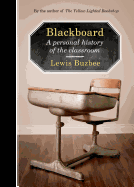
| Publisher: | Graywolf Press | |
| Genre: | Education, History, Biography & Autobiography, Personal Memoirs | |
| ISBN: | 9781555976835 | |
| Pub Date: | August 2014 | |
| Price: | $23 |
| Education |
by Lewis Buzbee
Displaying the same passion he exhibited in The Yellow-Lighted Bookshop, his love letter to bookstores, Lewis Buzbee here melds a fond memoir of his own education with snapshots of the history of American pedagogy. The result, he hopes, will stimulate readers to act in the interest of rescuing an educational system that, he passionately argues, is failing in its essential mission.
Buzbee organizes his book around a chronological account of his life as a student, marked by teachers and classrooms that were, in the main, "only exceptional in that they were exceptionally ordinary." The chapters that describe his years at Bagby Elementary School in San Jose, Calif., in the 1960s are the strongest (his college and graduate-school years correspondingly the weakest), as he convincingly evokes the sights, sounds and smells of that educational ecosystem. He's a capable guide whose observant prose is well suited to the task of stimulating our own memories.
Among the most affecting passages are his tributes to standout teachers, such as his eighth-grade civics teacher, Mrs. Tullis; she became a mentor who, though "ill paid for her efforts, freely offered her space and time." Blackboard's epilogue outlines the steep decline of the California school system based on what Buzbee (who lives in San Francisco and sends his daughter to private school) argues is "the lack of the public's will to fund schools adequately." "Raise my taxes!" he demands. One needn't subscribe to his agenda to appreciate the lasting value of the kind of education he portrays with affection and insight in this appealing book. --Harvey Freedenberg, attorney and freelance reviewer
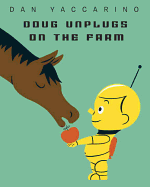
| Publisher: | Random House | |
| Genre: | Farm Animals, Animals, Imagination & Play, Juvenile Fiction, Robots | |
| ISBN: | 9780385753289 | |
| Pub Date: | July 2014 | |
| Price: | $17.99 |
| Children's & Young Adult |
by Dan Yaccarino
Dan Yaccarino's (All the Way to America) charming robot hero returns for another wireless adventure--this time on the farm.
Doug and his parents are off to visit the grandbots. Dad and Mom suggest Doug "plug in" to learn all about farms on their way to the country ("a baby pig is called a piglet"; "cows need to be milked every day," he learns). But Doug acquires some real-life knowledge when a flock of sheep breaks through a fence. He helps the farm girl round up the animals. The thankful farm girl then invites Doug to milk a cow (he earns a grateful bovine lick), to gather some hay from the loft ("prickly") and to pick apples ("delicious"). Doug even imprints on some baby ducklings (they follow him in a straight line).
Yaccarino works in bold, bright swathes of color and appeals to all five senses as Doug gathers information that can be acquired only through tactile experience. Children can see Doug's excitement when he uses his newfound knowledge to help get his family's car out of a ditch. When his parents suggest Doug "plug in" for the ride home, he chooses instead to reflect upon his amazing day. Without driving home the message, Yaccarino extols the virtues of getting out in nature and enjoying new experiences. Here's hoping for more adventures from an unplugged Doug. --Jennifer M. Brown, children's editor, Shelf Awareness

| Publisher: | Candlewick | |
| Genre: | Friendship, Animals, Pets, Social Issues, Dogs, Juvenile Fiction | |
| ISBN: | 9780763661397 | |
| Pub Date: | August 2014 | |
| Price: | $15.99 |
| Starred | Children's & Young Adult |
by David Ezra Stein
Caldecott Honor artist David Ezra Stein (Interrupting Chicken) introduces a pup with pizzazz and a healthy sense of self.
"I'm my own dog," says the furry hero. "Nobody owns me. I own myself." While other dogs get carried in a satchel or strain at a leash, the canine narrator leans freely against a fire hydrant. Stein serves up the puns ("I work like a dog all day"; "When I get home, I fetch my own slippers") and portrays the pooch's self-sufficiency: "Sometimes I throw a stick. Then I go get it. It's fun." He demonstrates the dog's self-esteem when the canine licks the reflection in the mirror and says, "I am a good dog." The trouble starts when the dog has an unreachable itch and lets a "little guy" scratch it, then allows the tie-wearing gent into the house. Soon the dog is leading the man by a leash and teaching him the stick game ("I have him throw").
Stein's pen, marker and watercolor create as much emotion as he does humor. He uses similar shapes and corresponding shades of cream, gray and red (on the dog's collar and on the man's tie) to connect the pair visually. They even sport the same grin when squirrel-spotting. Even youngest readers will laugh at how the canine narrator turns things topsy-turvy between man and his best friend, while adults will appreciate the pup standing in for a child making his first foray into independence. --Jennifer M. Brown, children's editor, Shelf Awareness